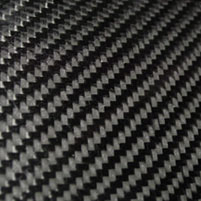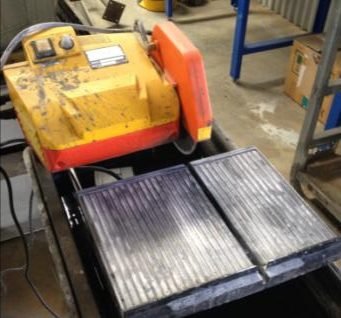Abstract
Carbon fibre composites are most commonly being used for reinforcement, as they provide much stronger durability, lasting wear and reliability. The matrix of the carbon fibre must be used with a type of a bonding agent that will serve as the strengthening element of the resulted product.
In the cross section, it adds properties that were previously nonexistent. The type of bonding, its strength and outcome, depends on many factors, including the surface of the material to which it is connected, the process of the procedure, the amount of space or area that is being used for the bond and the type of loading.
In order to properly determine the outcome and the modeling, all the conditions must be accurately controlled because in turn, this will be the defining quality of strength of bonding. The following paper will discuss in detail and walk through the experimentation process of the carbon fibre matrix bonding. It will also provide the results and report on the specific qualities of the bonds, in relation to various bonding agents.
For this purpose, Instron or Tensile testing machine will be used. The specifics of the experimentation will be dependent on the area or dimension of the sheet of carbon fibre, the rate at which it will be applied to the bonding surface and also, the different types of agents that will be used for bonding purposes. The goal of this study is to focus on the mechanical properties with specific attention to the agents applied in the bonds, such as rubber modified epoxy. This will be related and compared to the longitudinal sheer stiffness (Ks).
The specific materials that were used in the experimentation are: twelve concrete blocks with carbon fibre sheets and they were tested in relation to different bonding agents with select properties. In order to compare the received qualities, the data was recorded according to the corresponding displacement. Also, the concrete blocks were being subjected to the longitudinal force which would show overall effect of the types of bonding agents.
Methodology
Specimen preparation
The preparation stage will consist of preparing the specimens in order to make sure any extraneous conditions are nullified. A specific dimension of the concrete and carbon fibre will be set out and regulated in relation to the Instron Machine.
Preparation of concrete
The primary step was to build a certain and specific mix for the concrete. The designed properties were decided upon and results provided. The process was guided by the knowledge received from the third year subject, which focused on the designs and types of concrete. The following steps were taken:
- The amounts will be produced from the 11 steps of mix design (Appendices10.1).
- For the purpose of finding out the required amount of each element the value of separate elements—water, cement, fine aggregate, coarse aggregate were multiplied by the volume of the mould. This procedure has aided in preventing possible hazardous waste to be included in the solution.
Table below will outset the amount of elements in kilograms that were used for the project. Rectangular shaped moulds were used for the concrete.
Table 1.1 Mixing Design
To summarize, the primary step is to produce the concrete for the project which can be used as a testing sample. The dimension can be adjusted and decided upon in the later stages. The mixing of the elements—water, cement, coarse and fine aggregate are used to construct the materials. It will take 28 days for the material to become usable in the project.
There will be twelve moulds of concrete tested in the experimentation. After different agents are used to bond the carbon fibre, the resulted product will be tested on the Tensile (Instron) machine. The dimension of the rectangular shape of concrete is approximately (100*75). (See appendices 10.1 and 10.3).
Preparation of carbon fibre
For the testing procedure two sheets of carbon fibre are used. Dimensions are (100mm*75mm). Because of the specifics of the Instron machine, the top head of the carbon fiber is cut into a trapezoidal shape. For the protection of the carbon fibers due to possible damage in the experiment, two steel sheets are being attached to each one.

The next step is to cut carbon fibre sheets into the required sizes and dimensions and applying the steel sheets. An electric rotary machine was used to cut the carbon fibre.

Using sandpaper is another important step, as the surface of the carbon fibre must be made smooth. Then it is bonded with rubber modified epoxy to the metal sheet (See Appendices 10.3 and 10.4)
Preparation of rubber modified epoxy
The following is the plan in the testing of bonding agent for 12 concrete primes:
The full plan of test bonding agent for 12 concrete primes is as follows:
- Prepare approximate 250 ml form MBrace primer (3A:1B).
- Apply MBrace primer to 15 concrete prisms and let them curing for 24 hr.
- After 24 hr, we mix the following:
- Prepare approximate 500 ml form MBrace Saturant (3A:1B).
- Prepare 5% from rubber-modified resin (100ml Saturant: 5ml Hpro CTBN).
- Prepare 10% from rubber-modified resin (100ml Saturant: 10ml Hpro CTBN).
- Prepare 20% from rubber-modified resin (100ml Saturant: 20ml Hpro CTBN).
- Cut three sheets of PVDF polymer with dimension of 100mmX75mm).
- Appling the different types of epoxies on the pre curing of concrete prims as following:
- Apply 100 ml from normal MBrace primer mixer with CFRP laminate for three concrete prisms.
- Apply 100 ml from 5% rubber-modified resin mix with CFRP laminate for three concrete prisms.
- Apply 100 ml from 10% rubber-modified resin mix with CFRP laminate for three concrete prisms.
- Apply 100 ml from 20% rubber-modified resin mix with CFRP laminate for three concrete prisms.
- Apply 100 ml from normal MBrace primer mixer and PVDF polymer sheet with CFRP laminate for three concrete prisms.
- Allow 48 hr. to cure the 12 concrete prisms.
- Finally, we mix approximate 100ml from MBrace Saturant to apply on the both top face of CF laminate in order to fix the metal sheets.
Model size
From the beginning of the testing the dimension or model size were set out. These were dependent on the Instron machine and the following table outlines the dimensions:
Table 4.1: Concrete prism dimensions
CFRP plate sizes that were used in the processing are as follows:
Table 4.1: CFRP dimensions
Bonding of concrete and carbon Fibre
From the previous research and provided information, it is known that Rubber modified epoxy is very effective when used to bond carbon fibre with different types and sizes of concrete surfaces. Depending on the dimensions of the concrete, the quantity of Rubber modified epoxy must be calculated.
t is crucial that the proportions are worked out properly, so that the bonding process is adequate and of high quality. The Rubber modified epoxy was used in the experiment and the carbon fibre was bonded to each of twelve moulds of concrete. The carbon composite must be made free and clear of any irregularities with the sand pipe, which will greatly increase the strength of the bond. After the preparation stage has finished, Rubber modified epoxy is applied for the bonding to take place (See Appendices 10.3and 10.5)
Test setup
The first step will be to connect the bottom part of the specimen to the steel metal holder. Screws will be used to fixate it firmly in place. The following step will be to place it into the Instron machine 100 kN. Before this procedure is carried out, there are several things that must be done in relation to the checking of the proper adherence to standards. The first one would be to run the computer software, to make sure it works properly.
The second step is to apply the protection mode, according to the safety procedures. Then, the bottom and top heads of the device will be moved up and down in order to adjust the specimen. When the adjustment has taken place, top and bottom positions will be locked with the machine.